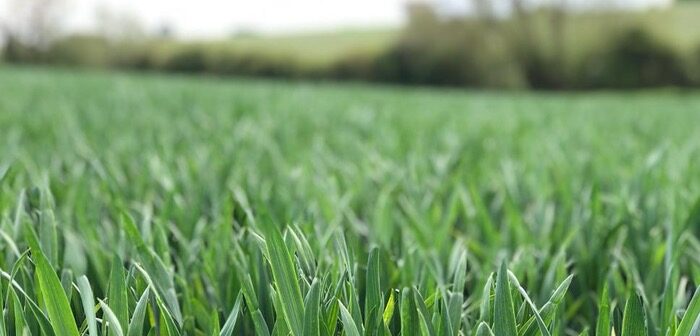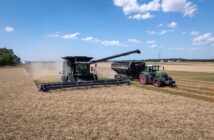Earlier this week, AHDB published the latest UK supply and demand estimates for wheat, barley, maize and oats for the 2022/23 season. The main revisions from March’s wheat estimates include further reductions for usage in animal feed (now at 6.8m tonnes), but increased human and industrial consumption (7.33m tonnes), with higher bioethanol demand outweighing a slight fall in starch and distilling usage. Wheat imports are also forecast up slightly at 1.2m tonnes, with marginally stronger demand for higher protein milling wheat. Wheat exports are also up by 150k tonnes from the previous estimates at 1.65m tonnes, with a stronger than initially expected export pace during the latter part of the season.
Despite greater exports, due to high production in 2022 and declines in animal feed demand this season, commercial wheat ending stocks remain high at 2.44m tonnes, up 32% on the year. So, how does availability look heading into the new season? And what does demand look like moving forward?
Wheat availability for the 2023/24 season
Olivia Bonser AHDB cereals and oilseeds analyst says: “We know that we will be entering the new season with significant opening stocks, so the bigger question mark is over new crop production prospects. In AHDB’s Early Bird Survey of plantings and planting intensions, the total UK wheat area for harvest 2023 was estimated up 1% on the year, at 1,821k ha. Using this intended area and Defra five-year average, minimum and maximum yields, basic wheat production scenario projections for harvest 2023 can be made.
“As at the week ending 25 April, 88% of the GB winter wheat crop was in good/excellent condition, ahead of 84% at the same point last season. Generally, crops are establishing well and following a lengthy wet period in March, we have seen improved weather over April and May. Long range forecasts for the coming few weeks also look favourable. With this in mind, it seems likely that production will be nearer the five-year maximum production scenario (based on the highest average yield in the past five years) rather than the five-year average production scenario. As it stands at the moment, and based of the information we know, its looking likely that production for 2023/24 could be in the realms of 15.5-16m tonnes, subject to final planted area and any weather events between now and harvest.”
Ms Bonser adds: “While it was reported this week that inflation in April fell to 8.7%, the first dip below 10% since August last year, according to the Office for National Statistics (ONS), food costs are still 19.1% higher than they were a year ago. The chief economist from the ONS also added that it could take six to twelve months before supermarket contracts expire, and we see any changes in food prices.
“So far this season, we have seen from the UK flour millers data that total flour production (excluding demand from the bioethanol and starch industries) has been slightly impacted by changing consumer habits and people eating out less. While usage by the brewing malting and distilling (BMD) sector is expected to be higher in 2022/23, there have been reports that some craft brewers have been struggling of late, due to the cost of living crisis. However, there has been an anecdotal shift from craft beers to cheaper own brand products. Looking ahead, with food and drink prices unlikely to fall much in the next six months, and out of home consumption likely to be down due to the rise in cost of living, wheat demand in these sectors could see a squeeze.
“For the bioethanol and starch industries, wheat usage for the remainder of this season has been increased in today’s estimates due to its price competitiveness against maize. If wheat remains competitive against maize, we could see usage up further in the new season. The new season EU maize crop is currently pegged at 62.1m tonnes by Stratégie Grains, up 9.9m tonnes from this season’s estimate, but remains relatively low. According to anecdotal reports, cereal demand in the EU feed market for the 2023/24 season is expected to remain sluggish, which could see greater availability, something to watch out for.
Slow recovery in pig feed demand
“Finally, at the moment animal feed production isn’t expected to rebound quickly heading into the new season. With pig and poultry feed being the main drivers of the decline in animal feed production, changes in demand will weigh largely on those sectors. According to AHDB’s pork market intelligence team, pig breeding numbers are seeing a slight climb at the moment. It’s thought that higher pig prices and lower feed costs could encourage growth, however it’s likely recovery will be slow, and we won’t see an immediate rebound at the beginning of next season. Energy costs and the impact of avian flu are also leading to slow poultry feed demand. Again, it’s unlikely that the sector will fully recover in the next few months.”
With heavy carry-in stocks and another relatively bumper crop expected for harvest 2023, its looking likely 2023/24 will be another season of high available supplies. However, with a recovery in animal feed demand expected to be slow and the cost-of-living crisis continuing, we could also see another season of relatively lacklustre demand. If the S&D situation does pan out like this, then its likely we will have another hefty balance and exportable surplus. It is worth noting that this situation could change as there is still a good couple of months before harvest and animal feed demand may make a faster recovery than expected. However, as it stands at the moment, 2023/24 is initially looking to be another season with a heavy balance sheet.
In terms of what this means for price direction, it’s likely as we head towards harvest we will continue to see UK wheat prices pressured as the surplus grows and if demand remains weak.




